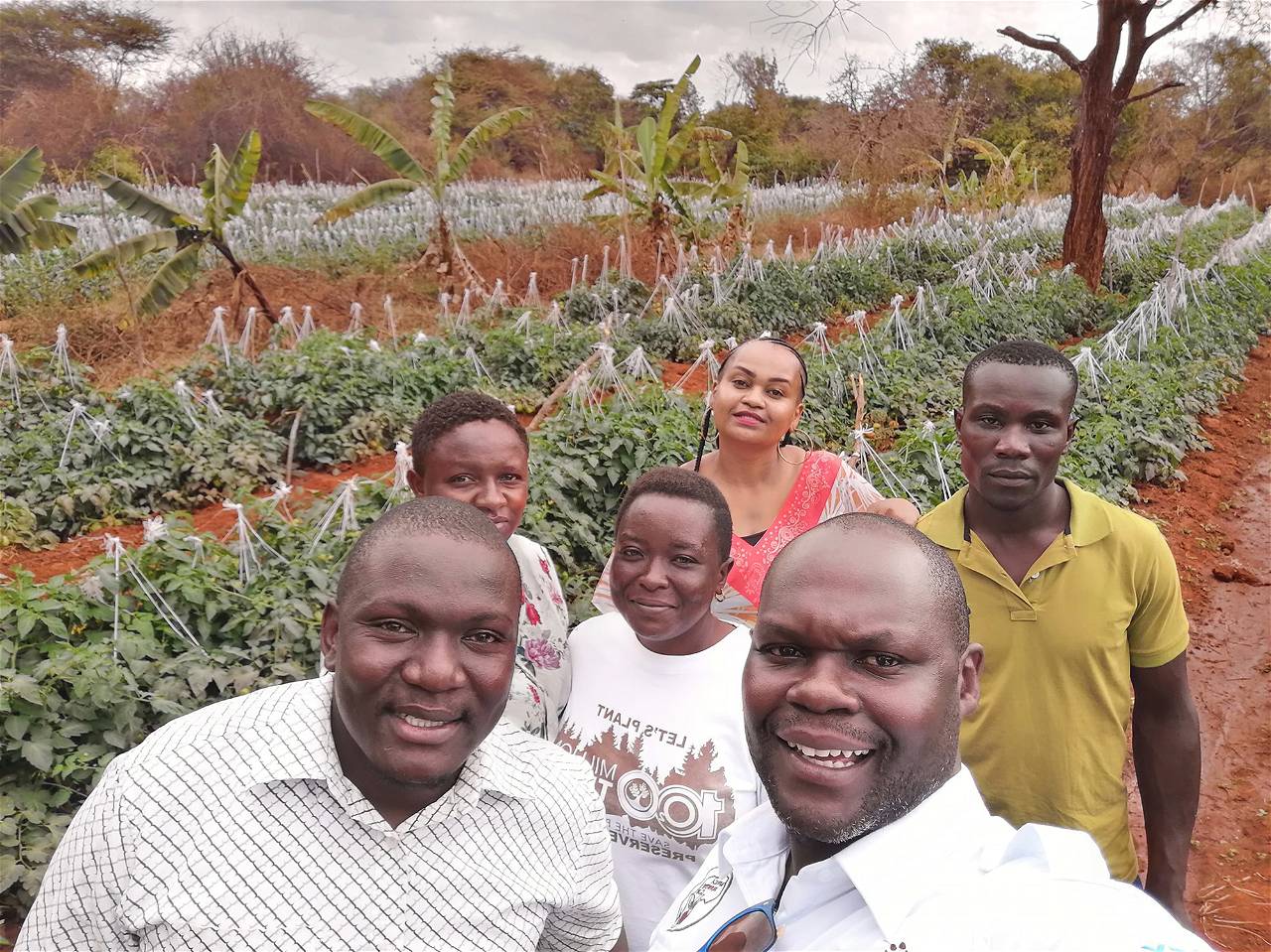
Thousands of farmers in Kenya despite of poor soil fertility & water scarcity have managed to increase their crop yields by 20%. With climate-smart agricultural techniques, Farmers of Kenya have also saved 20% costs of their fertilizers. With the support of IAEA (International Atomic Energy Agency) & in partnership with Food and Agriculture Organization of the United Nations (FAO), these techniques were introduced to help in improving soil fertility & enabling farmers to better manage the water requirements for crops.
In assessing nutrients qualities of soil & water resources, ISOTOPIC techniques play a very crucial role. From the Kenya Agricultural and Livestock Research Organization (KALRO), a group of scientists used isotopic & nuclear techniques to measure the changes in soil’s nutrients & water.
These efforts helps in keeping the soil healthy, improve nutrient strategic use & water, increase soil resilience & crop yields.
1. Above mentioned techniques were used in the Kajiado-Central and Tharaka sub counties to assess about efficiency of crop nitrogen use and to calculate nutrients and water requirements using the stable isotope nitrogen-15 (N-15) and soil moisture sensors. N-15 isotopes have the same amount of proton and electron as “normal” nitrogen atoms, but with an extra neutron, are effective tracers & thus can be employed to understand the movement of nutrients between soil and plants. N-15 also provides useful quantitative data about the efficiency of nutrients use by crops and this data further enables experts to improve water and fertilizer application strategies.
2. To quantify the amount of nitrogen captured from the atmosphere through biological nitrogen fixation by leguminous crops — a natural process in which these crops capture nitrogen from the air and accumulate it in their roots, the N-15 technique is also used. Nitrogen captured by these leguminous crops are released into the soil through the decay of plant roots after harvest, enhancing soil fertility. This technique is a total win-win for the farmers of Kenya because it reduces the need for expensive chemical fertilizers & saves the expense of nitrogen fertilizers. It also increased yields for cereals & legumes by 20% & 17% respectively.
3. Other than nutrients, farmers in Kenya needs to ensure about crops receiving suitable soil moisture through supplementary irrigation when the rains fail. Soil sensors have been installed in selected farmer’s fields by scientists to measure real-time soil moisture, temperature and salinity. When the related data from the sensors is collected & processed, the water requirements of the crops can be estimated. Farmers then can be advised on irrigation strategies for quantity & frequency of watering. The soil moisture measurements data is transmitted to farmers mobile phones which allows them to decide when & how much to irrigate.
Through its technical cooperation programme, the IAEA, has also supported the upgrade of KALRO’s analytical laboratory for agricultural water and nutrient management with the operationalization of an existing Isotope Ratio Mass Spectrometer (IRMS) to meet the capacity for stable isotope analysis for nitrogen-15, the installation and training for a vacuum extraction of water from soil and plant samples for water isotopes analysis and the provision of a laser analyser for stable water isotope analysis of water. “The IAEA’s assistance in upgrading equipment has strengthened KALRO’s capability to hold national and regional trainings on water management and conduct stable isotope analysis of water and nutrients for neighbouring countries in the future,” said Valentina Varbanova, the Project Management Officer of IAEA working with Kenya.
















